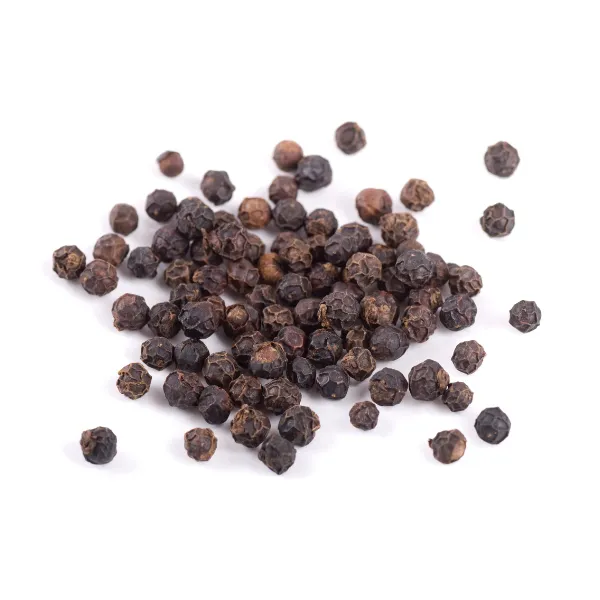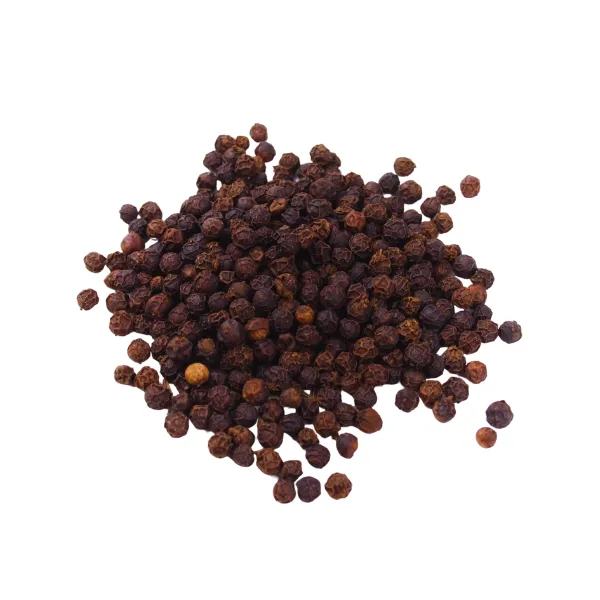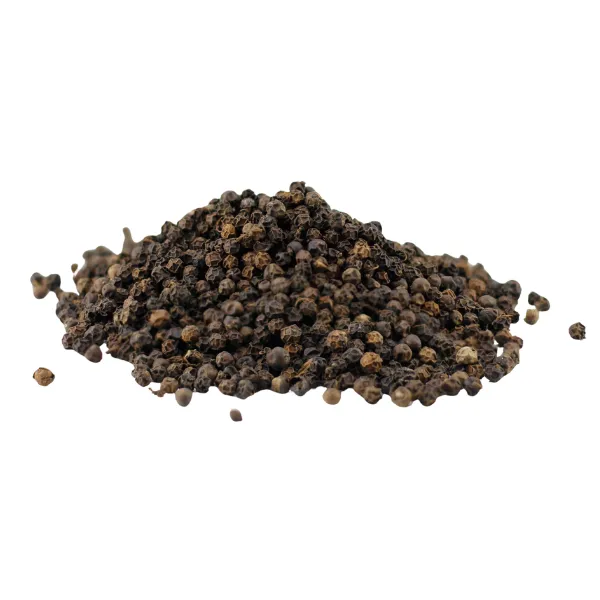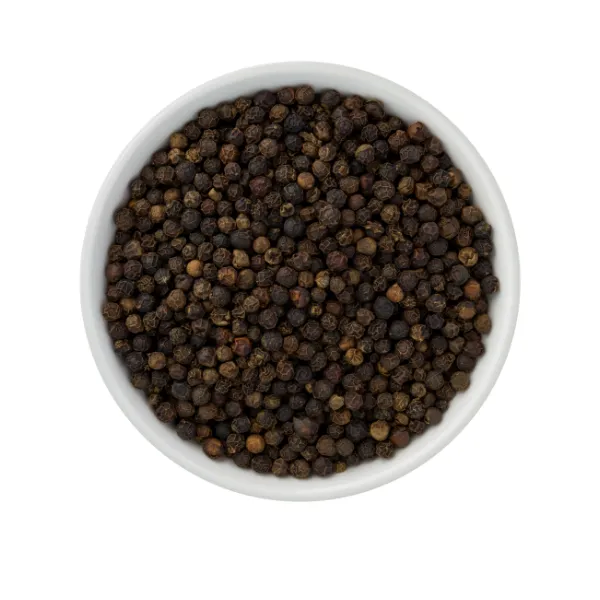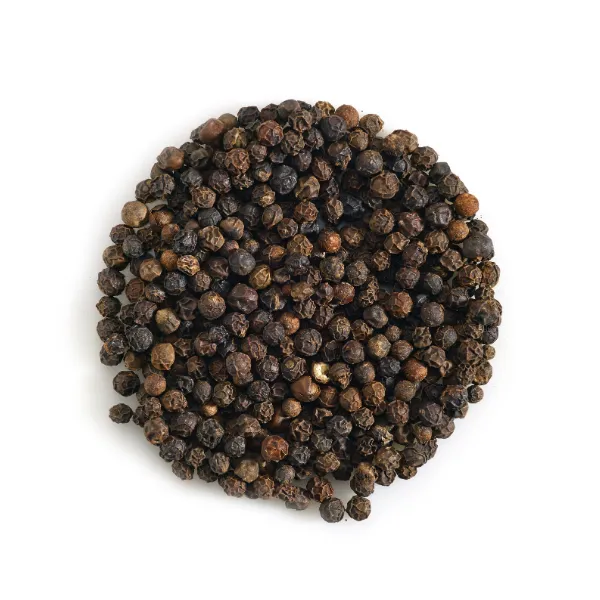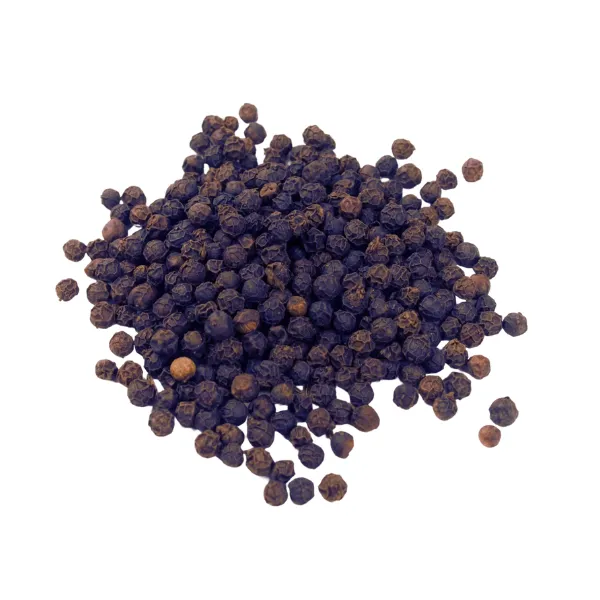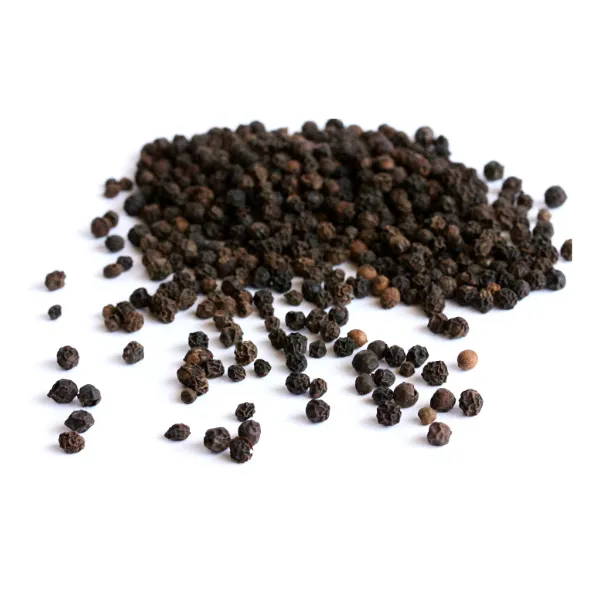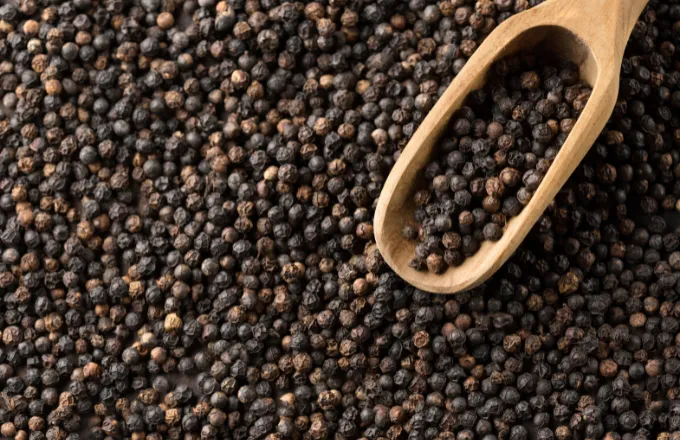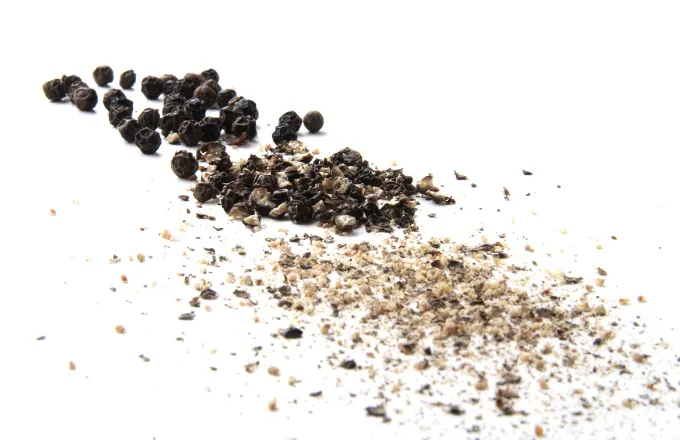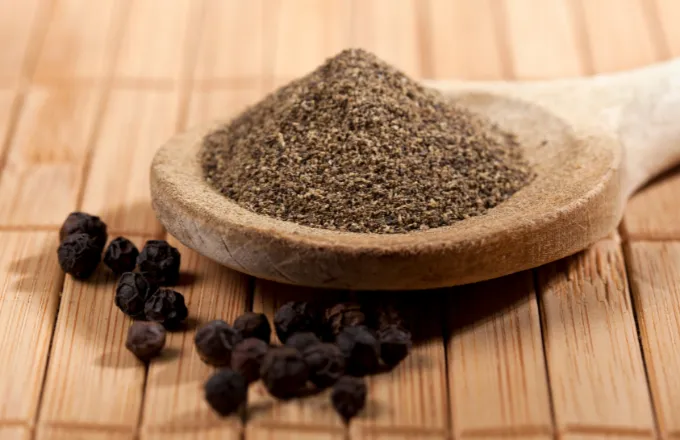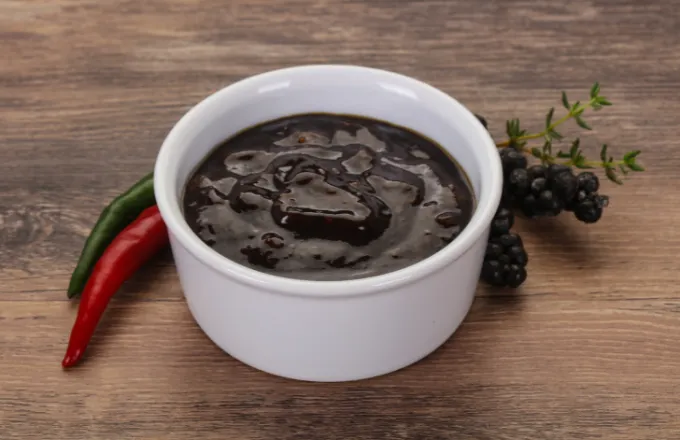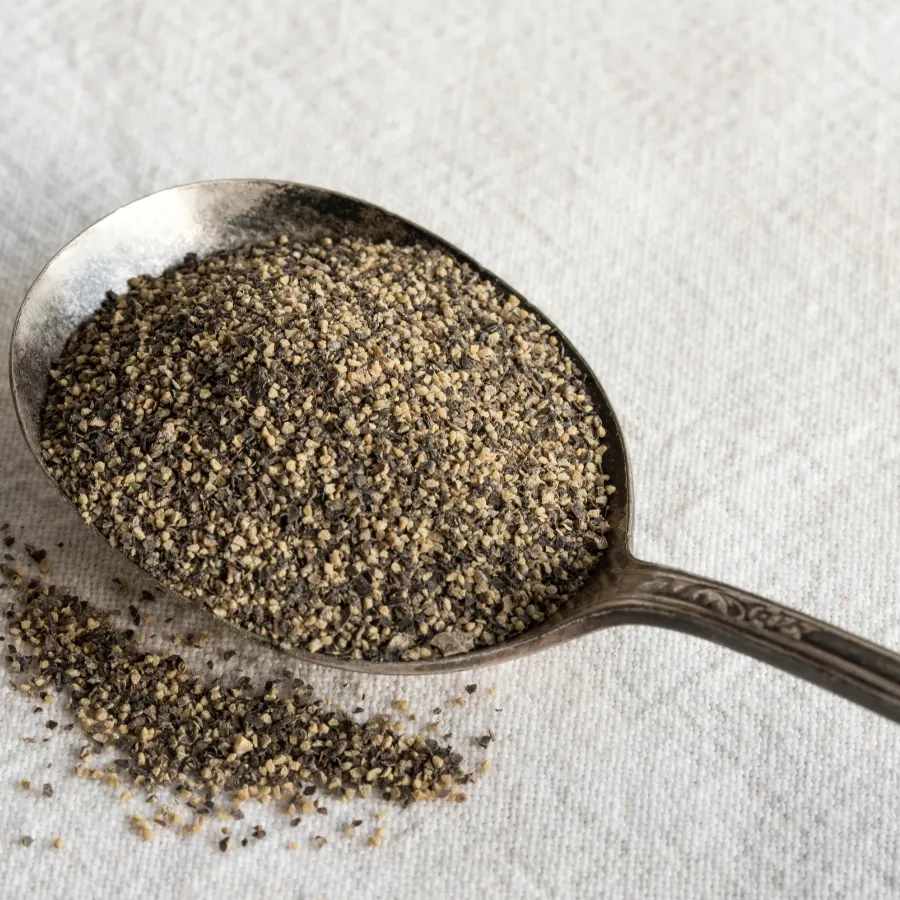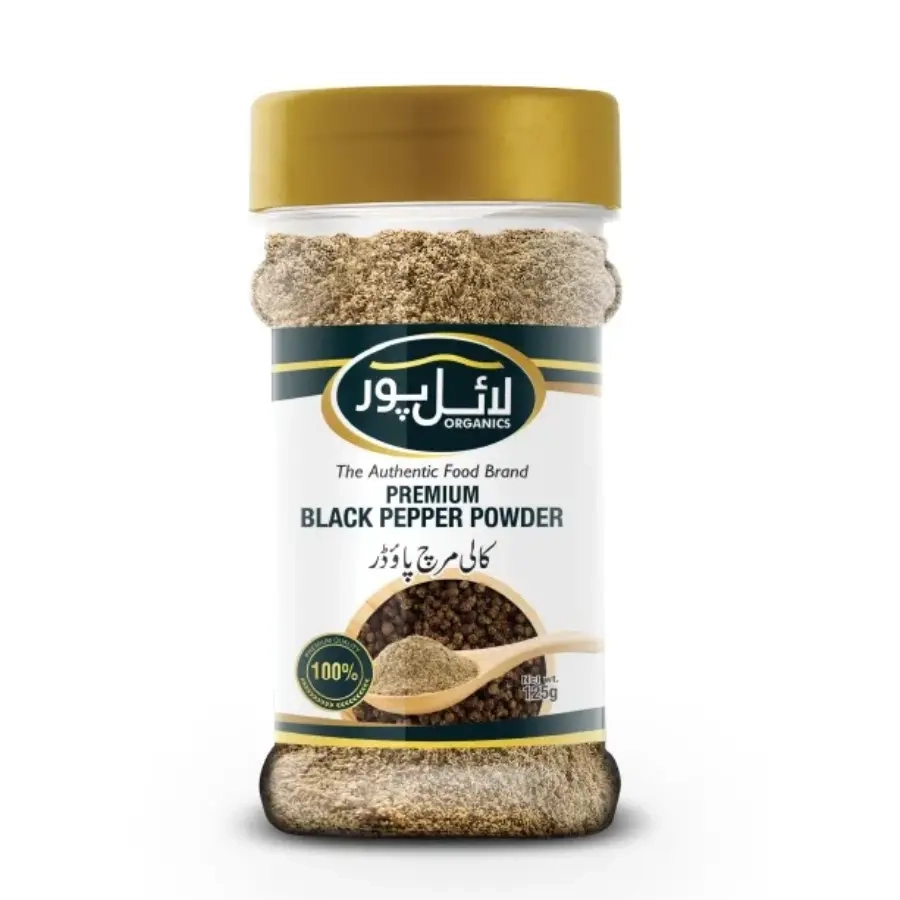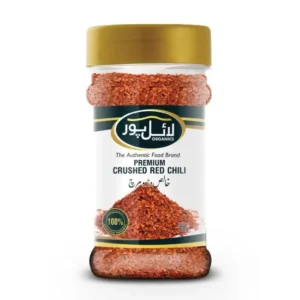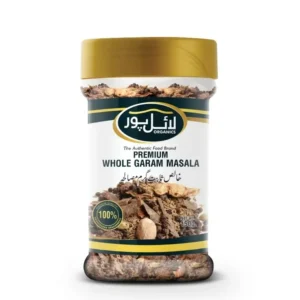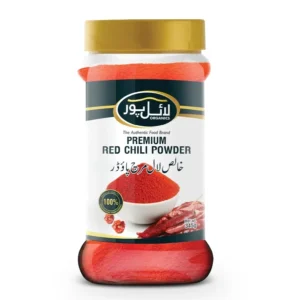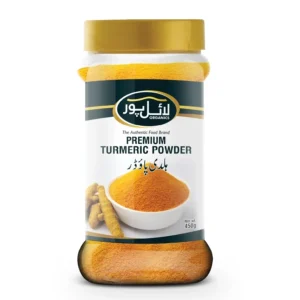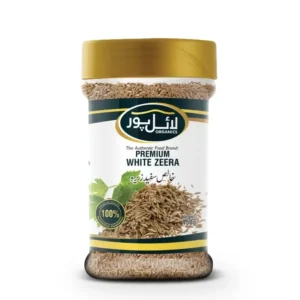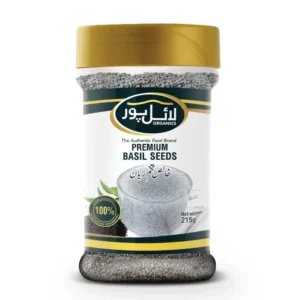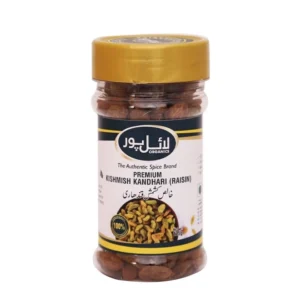Lyallpur Organics Premium Black Pepper (Kali Mirch Sabat) – 100% Natural Organic & Pure | Bold Flavor & Aroma | Perfect for Cooking, Seasoning & Health Benefits
Black pepper, often called the “king of spices,” is a widely used spice derived from the dried, unripe berries of the Piper nigrum plant. It’s characteristic intense flavor and aroma come from a chemical compound called piperine. They add depth and complexity to a wide variety of dishes. Beyond its culinary uses, it also holds potential health benefits, such as aiding digestion and possessing antioxidant properties.
History of Black Pepper
It’s origins trace back to the Western Ghats region of India, specifically the Malabar Coast in the present-day state of Kerala. Cultivation began as early as 2000 BCE, with evidence of its use in ancient Indian cuisine and medicinal practices.
Highly sought after for its flavor and medicinal properties, black pepper became an essential commodity on ancient trade routes, including the Silk Road. Its immense value led to its use as a form of currency, earning it the nickname “black gold.”
The high demand for pepper and spices ultimately fueled the Age of Exploration, as European powers sought to establish direct trade routes with Asia. Today, it is the most widely traded spice.
Our Top Selling Black Pepper Products
Kali Mirch: A Flavorful Boost for Your Health
- Rich in Antioxidants: It contains piperine, a powerful antioxidant that protects cells from damage caused by harmful free radicals. This reduces the risk of chronic diseases and slows down aging.
- Anti-inflammatory Properties: Piperine also exhibits anti-inflammatory effects, potentially easing symptoms of arthritis and promoting heart health.
- Enhanced Nutrient Absorption: Piperine can increase the bioavailability of certain nutrients, helping your body absorb more of the vitamins and minerals you consume.
- Digestive Aid: It has a long history of use in traditional medicine for improving digestion. It stimulates the production of digestive enzymes and reduces bloating and gas.
- A potential brain booster: Piperine has neuroprotective properties and enhances cognitive function, although more research needs to be done.
- Gut Health Support: It promotes beneficial bacteria in the gut.
- Possible Blood Sugar Regulation: Piperine also helps improve insulin sensitivity and lower blood sugar levels, making it potentially beneficial for individuals with diabetes or at risk of developing it.
Different Types of Black Pepper
Tellicherry
Tellicherry peppercorns, hailing from the Malabar Coast of India, are revered for their large size, complex flavor, and rich aroma. Harvested later in the season, they develop citrus notes, floral undertones, and even a hint of chocolate. Tellicherry pepper elevates any dish.
Perfect for: Gourmet cooking, finishing salts, and sauces
Malabar
Also, from the Malabar Coast, Malabar peppercorns are more miniature but pack a powerful punch. They boast a bold, pungent flavor with a delightful blend of spice and citrus. This versatile pepper is a go-to for everyday cooking, adding a familiar warmth to your favorite dishes.
Perfect for Everyday cooking, marinades, rubs
Lampong
Venture to the Lampong region of Sumatra, where you’ll find peppercorns with an earthy, smoky essence. These peppercorns are the secret weapon for adding depth and complexity to hearty dishes like grilled meats, stews, and chili.
Perfect for: Grilled meats, stews, rich sauces
Sarawak
Known for its milder flavor and unique woody aroma, Sarawak pepper is the perfect choice for those who prefer a subtle peppery note. Grown in the Malaysian state of Sarawak, this pepper adds a touch of warmth without overwhelming the other flavors.
Perfect for: Delicate dishes, seafood, soups
Vietnamese
Vietnam, a significant pepper producer, gifts us with black peppercorns, boasting a distinctive fruity flavor. Hints of citrus and pine dance on the palate, making this pepper a versatile choice for savory and sweet dishes.
Perfect for: Savory and sweet dishes, baking, desserts
Brazilian
Brazilian black pepper is a rising star in the culinary world, celebrated for its complex flavor profile. With a subtle heat and notes of citrus, fruit, and even eucalyptus, It is perfect for those seeking a unique and exciting addition to their spice collection.
Perfect for: Experimentation, exotic dishes, unique flavor combination.
Talamanca
Talamanca pepper, grown in the mountains of Costa Rica, is a rare treasure. Its flavor profile is exceptional, offering hints of citrus, chocolate, and even mint. This pepper is a sought-after ingredient for chefs who crave unique and memorable flavors.
Perfect for: High-end cuisine, special occasions, unique dishes
Kampot
Considered one of the world’s finest peppers, Kampot pepper is a culinary masterpiece. With its GI status ensuring quality and origin, this pepper delights with floral, citrus, and eucalyptus notes and a lingering heat. Kampot pepper is a favorite among top chefs worldwide.
Perfect for: Gourmet dishes, culinary creations, unique gifts
Different Forms of Kali Mirch
Whole
The unripe, dried berries of the pepper plant are known as whole black peppercorns. Their size and color can vary depending on their growth’s specific variety and region. These peppercorns are ideal for dishes that benefit from a slow, gradual heat release. They shine in marinades, brines, stocks, and sauces, simmering over time to infuse their complex flavor. Grind them before using them in dishes like steak or pasta for a potent burst of fresh pepper flavor.
Cracked
Cracked black pepper is simply whole peppercorns that have been coarsely broken into pieces. This form offers a dual benefit: enhancing flavor and satisfying texture. It’s a fantastic topping for salads, grilled meats, and fish. Cracked black pepper can also be incorporated into spice rubs or used as a simple garnish on dishes like scrambled eggs or avocado toast.
Powder
Black pepper powder is the most ubiquitous form of black pepper in kitchens, also known as ground black pepper. It’s created by finely grinding whole peppercorns, resulting in a versatile seasoning suitable for almost any dish. Sprinkle it on meats, vegetables, soups, stews, pasta – endless possibilities. Black pepper powder is also crucial in many spice blends and sauces.
Oil
Black pepper oil is a concentrated essence of this beloved spice, extracted directly from the peppercorns. This essential oil boasts an intensely peppery flavor and aroma. Due to its potency, a little goes a long way. Drizzle it over salads, marinades, stir-fries, or desserts for a unique and unexpected kick. Black pepper oil is also utilized in aromatherapy for its warming and invigorating properties.
Sauce
Black pepper sauce is a savory sauce in which black pepper takes the starring role. Black pepper sauces range from simple pan sauces to rich, creamy peppercorn sauces. While it’s a classic pairing for steak, black pepper sauce can complement chicken, fish, vegetables, and pasta dishes, adding depth and warmth to their flavors.
Freshly cracked peppercorns give a burst of peppery flavor, while ground pepper adds a deeper pepper taste. It is also a key ingredient in spice blends, like the famous French blend “quatre épices” (which means “four spices” in French).
Subcontinental Recipes
- Saag Paneer: This classic Indian dish features cubes of paneer cheese in a creamy spinach gravy generously seasoned with black pepper. The earthy spinach and creamy cheese perfectly complement the heat of the piper nigrum.
- Chicken Tikka Masala: A beloved dish from the Indian subcontinent, chicken tikka masala features tender chicken pieces in a spiced tomato and cream sauce. It adds depth to the rich and flavorful curry.
- Dal Makhani: Black lentils simmered in a rich, buttery sauce with black peppercorns are a staple in many subcontinental cuisines. The slow cooking allows the it to infuse the lentils with its flavor, creating a comforting and flavorful dish.
- Jeera Rice: Cumin seeds and black peppercorns are the stars of this simple yet flavorful rice dish common in South Asia. The warm spices add complexity to the fluffy rice, making it a perfect accompaniment to curries and stews.
Culinary Uses in Different Cuisines
Indian Cuisine
Black pepper is a cornerstone of Indian cooking, used in whole and ground forms. It appears in spice blends like garam masala, adds depth to curries like chicken tikka masala and dal makhani, and infuses warmth into rice dishes like jeera rice. It is also used in savory snacks, pickles, and even some desserts for a unique twist. In South India, it’s a key ingredient in rasam, a tangy soup, and various spice pastes.
Western Cuisine
In Western cuisines, It is often paired with salt as an essential seasoning for meats, vegetables, and salads. It’s also used in sauces like steak au poivre, where crushed peppercorns create a crust on the meat. Grounded pepper is a staple in soups, stews, and pasta dishes, while freshly cracked pepper adds a bright, pungent note to finished dishes. It’s also used in baking gingerbread, spice cakes, and even some chocolate desserts.
Asian Cuisine
It plays a versatile role in Asian cuisines. It’s used in stir-fries, marinades, and braised dishes in Chinese cooking. While not from the same plant, Sichuan peppercorns are often combined with black pepper to create a unique numbing spiciness. In Southeast Asian cuisines like Thai and Vietnamese, It is featured in curries, soups, and noodle dishes. It’s also used in spice pastes and marinades for grilled meats and seafood.
Other Top Products By Lyallpur Organics
When choosing black pepper, consider how you’ll use it. Whole peppercorns are ideal for slow-cooked dishes and freshly ground flavor. At the same time, cracked pepper adds texture and flavor to finished dishes. Ground pepper is the most versatile option for everyday cooking.
When it comes to choosing organic or non-organic black pepper, the decision is a personal one based on your budget and values. Organic pepper is grown without synthetic pesticides or fertilizers, making it a good choice for those prioritizing environmentally friendly and potentially healthier options. Non-organic pepper is grown with synthetic pesticides or fertilizers and is often more affordable.
Store whole and cracked peppercorns in airtight containers in a cool, dark place where they can last for several years. Ground pepper should also be stored in an airtight container in a cool, dark place, but for optimal flavor, use it within three months.
When buying black pepper, look for plump, evenly-sized peppercorns free from debris and with a pungent aroma. It’s best to buy in small quantities, especially ground pepper, to ensure you use it while it’s fresh and flavorful.
Cultivation of Black Pepper
The “king of spices,” is a tropical vine that thrives in warm, humid climates with ample rainfall. This perennial vine can climb up to 10 meters (33 feet) high, showcasing glossy, heart-shaped leaves and producing small white flowers that eventually develop into the berries known as peppercorns.
For optimal growth, It requires specific conditions. It flourishes in tropical and subtropical regions with temperatures ranging from 25°C to 30°C (77°F to 86°F) and high humidity. A well-distributed annual rainfall of 1250-2000mm is ideal. The soil should be well-drained, fertile, and rich in organic matter, preferably slightly acidic, with a pH of 5.5 to 6.5. While young pepper plants need partial shade, mature plants can handle more sunlight.
It cultivation begins with propagation through stem cuttings planted near support structures like trees or poles for the vines to climb. Maintaining these support systems, regular fertilization, and consistent moisture are crucial for healthy growth and optimal yield. Vigilance against pests and diseases is also essential. Harvesting typically occurs when the peppercorns are green and slightly unripe. These berries are then processed into the various types of pepper we know: black pepper (briefly boiled and sun-dried), white pepper (ripe berries with the outer skin removed), and green pepper (preserved by pickling or freeze-drying).
